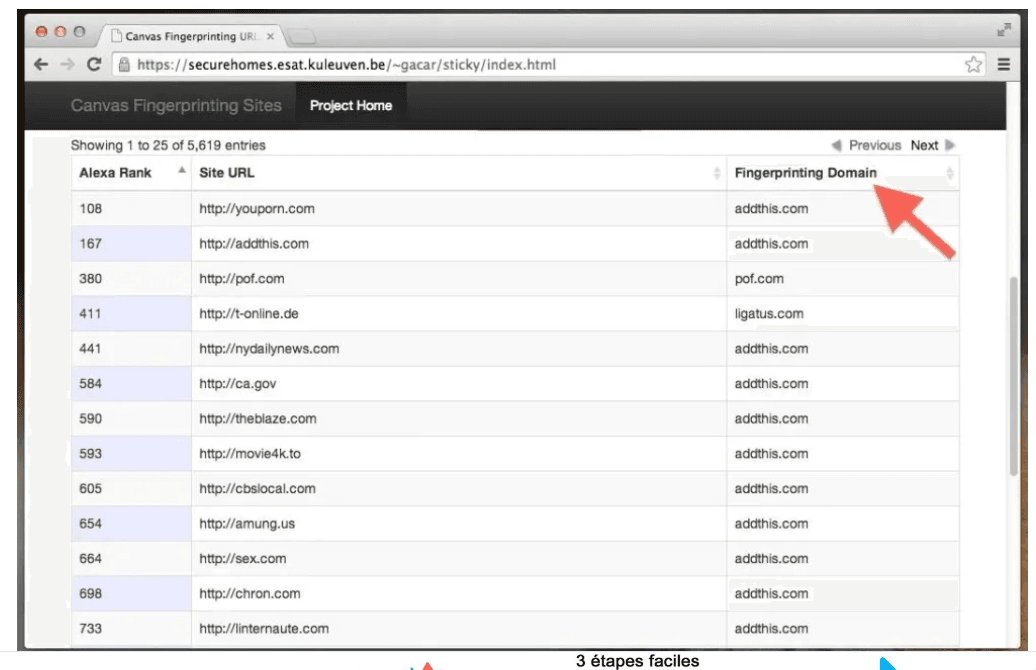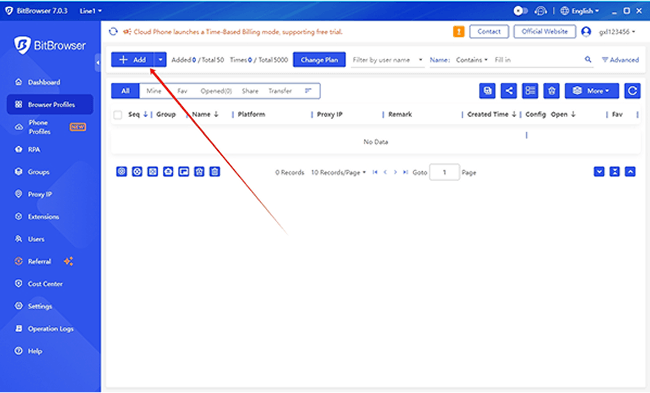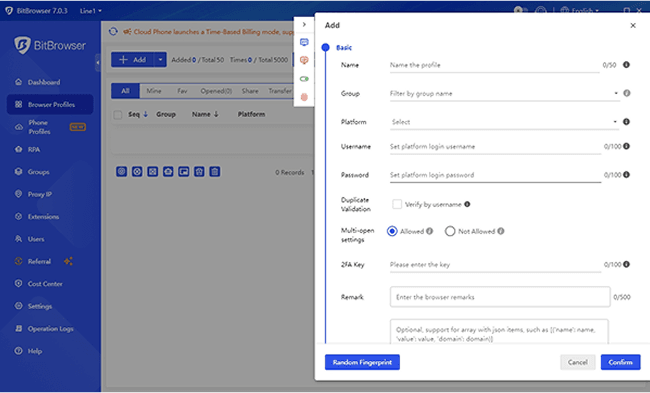What is Browser Fingerprinting? How It Works and How to Protect Your Online Privacy
Online privacy is an ever-growing concern, and while many people are familiar with cookies, there’s another, more invasive form of tracking you might not know about—browser fingerprinting. This method is used to build a unique profile of your device, browser, and settings, making it possible to track you even when you clear cookies or use incognito mode. In this article, we’ll break down what browser fingerprinting is, how it works, the data it collects, and how you can protect your privacy online.
What is Browser Fingerprinting?
Browser fingerprinting is a method of tracking individuals on the internet by collecting unique data points from their web browser. Unlike cookies, which are small files stored on your device that can be deleted, browser fingerprints are persistent. This means they can't be easily erased, making them an incredibly effective tool for surveillance.
When you visit a website, the site collects information about your browser’s configuration—things like the type of browser you're using, your screen resolution, your installed fonts, and much more. Even if you delete your cookies or use a private/incognito browsing session, these unique traits make it possible for the website to recognize you. It’s like having an invisible fingerprint that follows you everywhere.
How Browser Fingerprinting Works
Browser fingerprinting works by identifying and collecting various attributes from your web browser that, when combined, create a unique fingerprint for you. These attributes include, but are not limited to:
- User agent string: The browser, version, and operating system you are using.
- Screen resolution: This helps to distinguish users based on the size and quality of their display.
- Fonts and extensions: The fonts you have installed and the browser extensions you use can help create a unique identifier.
- Canvas and WebGL fingerprinting: These techniques use subtle differences in rendering graphics or 3D objects to identify devices.
Even though no single data point may uniquely identify you, when combined, they create a fingerprint that’s almost impossible to erase.
What is Device Fingerprinting?
Device fingerprinting is similar to browser fingerprinting but goes a step further by collecting data from your entire device, not just your browser. This includes information about your operating system, hardware specifications, and network settings.
Think of it like this: while browser fingerprinting focuses on how your browser operates, device fingerprinting looks at how your entire device functions in its environment.
How Browser and Device Fingerprinting Differ
Browser Fingerprinting: Focuses primarily on the software layer—your browser, extensions, fonts, screen resolution, and more.
- Device Fingerprinting: Goes beyond just the browser, tapping into the hardware and system configurations of your device, such as the type of device (laptop, mobile), operating system, IP address, and even the default time zone.
Together, they provide an incredibly detailed picture of your online identity.
Data Collection Through Browser Fingerprinting
Several data points are collected to create a unique browser fingerprint:
- User Agent String: This tells the website about the type of browser, version, and operating system you're using.
- Screen Resolution: The size and pixel density of your screen can be used to differentiate between devices.
- Fonts: The fonts installed on your browser can reveal information about your system configuration.
- Canvas Fingerprinting: This technique uses hidden HTML5 elements to create a unique signature based on how your device renders images.
- WebGL Fingerprinting: Similar to canvas fingerprinting, but uses your device's graphics hardware to generate a unique identifier.
These seemingly minor details add up to form a fingerprint that’s hard to evade.
Data Collection Through Device Fingerprinting
Device fingerprinting digs deeper into your system:
- Device Type and Operating System: Information about whether you're using a computer, tablet, or phone, and which operating system you have.
- IP Address: The IP address reveals your location and which Internet Service Provider (ISP) you're using, helping to narrow down your identity.
- Hardware Specs: Details like your processor type, screen resolution, and even your network settings can provide insights into the specific model of your device.
All this data combines to create a powerful fingerprint that tracks you across the internet.
How Fingerprinting Strategies Work
Fingerprinting relies on combining various data points to create a digital profile. Let’s look at some of the strategies:
- IP Address Fingerprinting: Your IP address is one of the simplest and most common forms of tracking. It reveals your location, device type, and ISP. If it remains static or isn't masked by a VPN, it becomes a reliable tracking mechanism.
- Canvas Fingerprinting: A hidden HTML5 canvas element is used to draw a unique image, based on subtle differences in device rendering. These differences are stored as a fingerprint, allowing websites to track your device even without cookies.
- WebGL and Audio Fingerprinting: WebGL gathers information about your device’s graphics hardware, while audio fingerprinting looks at how your device processes sound. Both provide additional data points that are unique to your device.
- Plugin and Extension Tracking: Tracking the plugins and extensions installed on your browser gives another unique marker for tracking your activity.
- Device Configuration Tracking: Your system's fonts, time zone, and hardware specifications also contribute to your device fingerprint.
IP Address Fingerprinting
Your IP address is a fundamental piece of the fingerprinting puzzle. It can reveal:
- Your approximate geographic location.
- The device type you're using.
- The operating system you're on.
- Your ISP.
Without a VPN to mask your IP, your browsing activity can be easily traced back to you.
Canvas and WebGL Fingerprinting
Canvas Fingerprinting works by drawing a hidden image using HTML5 and recording how your device renders it. This subtle variation in rendering can be used to generate a unique fingerprint, even if you try to clear your cookies or use incognito mode.

WebGL Fingerprinting extends this by analyzing 3D rendering. Because of the unique hardware configurations on each device, WebGL can be a powerful tool for tracking.
Audio Fingerprinting and Plugin Tracking
Audio Fingerprinting involves analyzing how your device processes sound. Each device has slightly different audio hardware and configurations, which can be used to create a unique identifier.
Plugin Tracking looks at which plugins and extensions are installed on your browser. These are often unique to each user and can be used to track individuals across websites.
Device Configuration Tracking
Device configuration elements like your system fonts, time zone, and hardware specifications provide additional data points for fingerprinting. Even seemingly trivial details can contribute to a highly unique profile that makes it difficult to escape tracking.
Use our Anti-Detect Browsers
Anti-detect browsers, like BitBrowser, offer an easy and effective way to protect your privacy. These browsers come with pre-configured privacy settings that modify your fingerprint data, making it harder for trackers to identify you.
With minimal effort required from the user, anti-detect browsers are ideal for anyone seeking quick and automatic privacy protection, helping you avoid online tracking risks.
How to Use BitBrowser for Anonymous Internet Browsing
BitBrowser stands out for its simplicity and user-friendly design, making it easy to maintain anonymity while browsing. Getting started with BitBrowser takes just a few minutes. Here’s a step-by-step guide:
- Create a New Profile:
After installing BitBrowser, go to the "Browsers" tab. Click the "New Profile" button to begin setting up your first anonymous browsing profile.

2.Configure Fingerprints for the Profile:
You have the option to generate a random fingerprint for a quick setup or manually adjust settings, such as language preferences and WebRTC. You can even assign a unique IP address to each profile to further enhance privacy.

3.Launch and Browse:
Once your profile is set up, launch it like any other browser. BitBrowser ensures that no cookies, trackers, or footprints are left behind, allowing you to browse the web privately and anonymously.
With BitBrowser, you can enjoy seamless and secure browsing without worrying about being tracked!